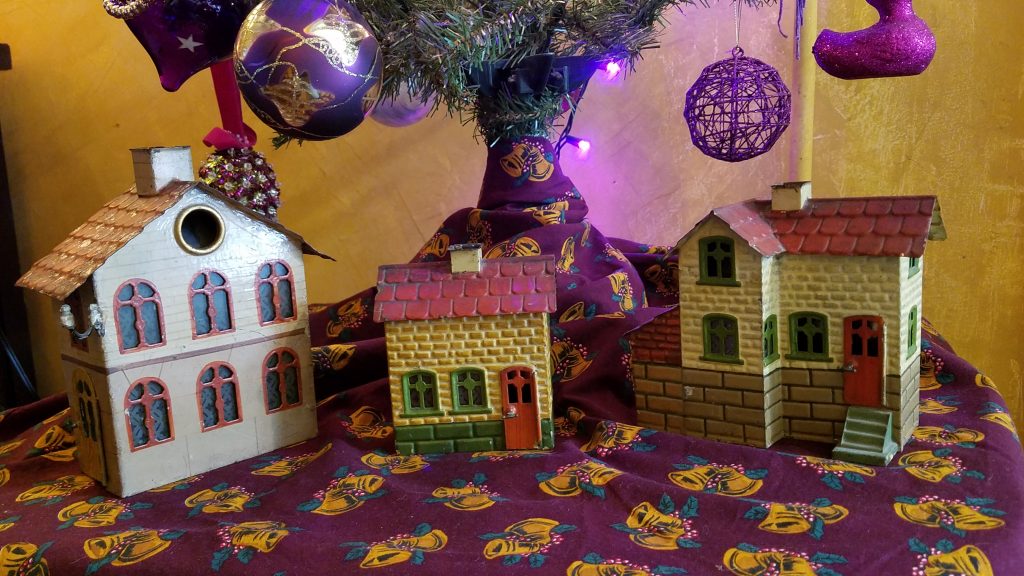“Putz” Houses: A Pennsylvania Holiday Tradition
by Martha Capwell-Fox
Sometimes, dads buy the most inappropriate gifts for their babies.
Hockey skates.
Two-wheel bikes.
These charming little metal houses.

In October, 1899, Bethlehem Iron president Robert Packer Linderman bought them as a birthday present for his only son, Robert Packer Linderman, Jr.
It was Junior’s first birthday.
To be fair, Linderman probably didn’t expect his baby boy to play with the houses. It’s likely they were meant to be the start of a Christmas putz—a miniature village with a wind-up toy train circling under the Christmas tree. The houses, which look distinctly European and probably were made in Germany, have glass windows with patterns that look like curtains. The chimneys actually work, because the houses are lit from within by candles.
Near the turn of the 20th century, the traditional Christmas display known as a “putz” (the “u” sounds like the “ou” in “should”) in Bethlehem and elsewhere in Pennsylvania had begun to acquire a dual identity: many families kept the religious stable-and-manger scene but also built the town-and-train displays as a holiday treat for children. In his classic book about Pennsylvania German Yule customs, Christmas in Pennsylvania, author Alfred Shoemaker quotes a 1907 article by a Moravian minister:
The Christmas “putz” must be admired and enjoyed, played with, in fact. For every genuine “putz” should have its foreground of sand in which the children can make Noah and his family travel once more in procession to the ark, or in which treasures can be buried to be dug up again to the wonder and enjoyment of everyone.
Robert Packer Linderman Jr. died in 1973. In 2008, his nephew, Robert Packer Linderman Frick, donated these little houses, along with a larger, European-style train station that flies a metal French flag, to the National Canal Museum. For a time, they graced the model train display at Two Rivers Landing, then shared an Emrick Center display case with some of Louis Buehler’s Lionel buildings and model trains. Though the museum is closed this holiday season, and there’s no tree there to put them under, we can enjoy this nostalgic look back at old-time decorations through the modern magic of the internet.























Join the Conversation!